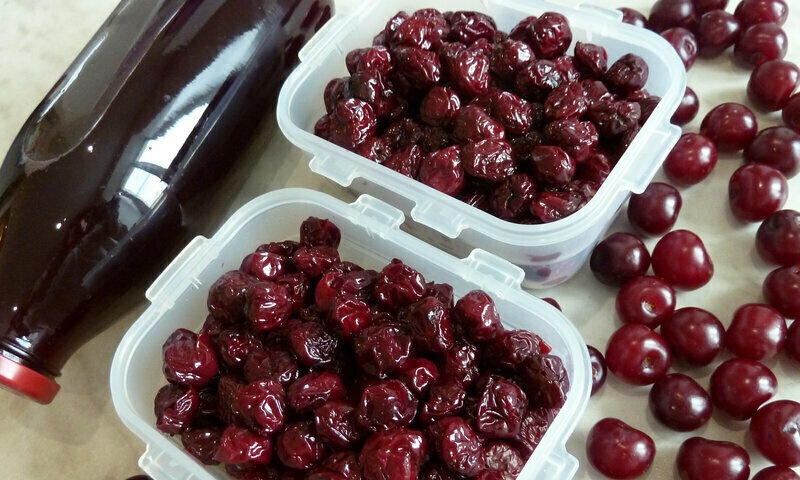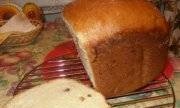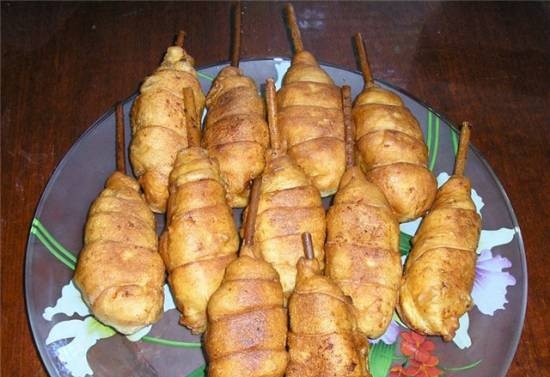, I have clear recommendations from the manufacturer - to ferment yogurt at a temperature of 41-42 degrees. Therefore, I think 41.6 is an excellent temperature. The maximum is 45 degrees. When I have an opportunity, I will post a photo of the table with recommendations.
36 degrees according to the table is the temperature of kefir.
For those wishing to get acquainted with the production of yoghurt in industry (temperature, characteristics, etc.), please read below. By the way, there is a rationale for how fermentation at 42 degrees differs from fermentation at lower temperatures.
Taken from here: 🔗
Honored Worker of the Food Industry of the Russian Federation, Ph.D. Z.S. Zobkova, Ph.D. T.P. Fursova, GNUVNIMI
Various types of yoghurts are currently produced in Russia. Depending on the technology that determines the organoleptic characteristics of the finished product, including the consistency, there are yoghurts prepared by the thermostatic method, with an undisturbed curd and a dense consistency, yoghurts produced by the reservoir method, with a broken clot, and drinking.
Drinking yoghurt is becoming an increasingly popular product. Its unique nutritional properties with a wide variety of flavors, practical and attractive packaging, lower cost in comparison with other types contribute to real consumer success.
Abroad, the technology of drinking yoghurt differs in that the product, after fermentation, is mixed, homogenized, cooled to storage temperature (5 ° C) and bottled. In our country, when drinking-type yoghurt is produced, the product, after fermentation and mixing, is partially cooled in a tank or in a stream to a storage temperature (4 ± 2 ° C) and poured. In this case, the milk-protein clot, subject to destruction during the cooling process, poorly restores the structure and is prone to syneresis; therefore, the thixotropy (ability to recover) and the water-holding capacity of the system are of particular importance. There are several ways to improve these indicators.
One of them is the selection of starter cultures. It is known that microorganisms that make up yogurt starter cultures, depending on the physiological characteristics, form milk-protein clots with different types of consistency when fermenting milk: prickly or viscous with varying degrees of ductility. For drinking yoghurt, a viscous type of starter culture with a reduced tendency to syneresis is used.
Starter cultures that form clots with good water-holding capacity, determined by centrifugation for 5 min at a separation factor of F = 1000, should not release more than 2.5 ml of serum per 10 ml of starter culture [1,4]. The structural properties of the curd are also influenced by the culture temperature of the starter cultures. The optimum fermentation temperatures for starter cultures consisting of Str. Thermophilus and Lb. delbrueckii subsp. bulgaricus, - 40-45 ° С [1, 5]. A decrease in the ripening temperature to 32 ° C causes excessive formation of exopolysaccharides and obtaining a product characterized by a more pronounced consistency stability, but also excessive viscosity [11].
In industrial production, the following modes of fermentation of yoghurt are used when using a starter culture consisting of Str. Thermophilus and Lb. delbrueckii subsp. bulgaricus: in Russia, the fermentation temperature is 40-42 ° C, the fermentation time is 3-4 hours, the amount of ferment is 3-5%; in the EU countries, respectively, 37-46 ° С, 2-6 hours, 0.01-8% (more often 2-3%) or 30-32 ° С, 8-18 hours, 0.01-1% [1, 6, 7].
Cultures Lb. delbrueckii subsp. bulgaricus, Str. subsp. Thermophilus is able to form extracellular polymers, which are carbohydrate-protein complexes. The amount of these polymers increases at lower fermentation temperatures or under the influence of unfavorable factors. Thickening ability of polysaccharides produced by Str.thermophilus. differs from that produced by Lb. delbrueckii subsp. bulgaricus.
Mucous substances produced by different strains of Str. Thermophilus and Lb. delbrueckii subsp. bulgaricus can have different chemical compositions. In polysaccharides Lb. delbrueckii subsp. bulgaricus, arabinose, mannose, glucose, galactose are present, which are linked by linear or branched bonds. These polymers are chemically similar to the β-glucan components of cell membranes. Some bacteria Str. Thermophilus produce tetrasaccharides consisting of galactose, glucose and N-acetyl-galactosamine with a molecular weight of 1 million, which have thickening properties. The presence of these mucous substances improves the uniformity and elasticity of the clot [5].
Based on comprehensive studies of the chemical composition and rheological properties of the clot, it is assumed that an increase in its elasticity formed by viscous strains is associated with the inclusion of exopolysaccharide interlayers in casein matrices, thus increasing the distance between casein micelles, which causes an increase in water-holding capacity and obtaining a soft yogurt texture [9 ].
At the same time, it was noticed that cultures of microorganisms producing exopolysaccharides in the same concentration formed clots with different organoleptic and rheological properties. Thus, more slimy cultures formed clots with a lower viscosity than less slimy cultures with the same amount of exopolysaccharides. Differences in the consistency of yoghurt are explained not by the amount of exopolysaccharides, but by the nature of the formed spatial protein structure. The more extensive, branched network of protein chains and polysaccharides produced by cultures of microorganisms, the higher the viscosity of the clot [8,12].
Considering that not all mucous strains have the ability to increase the viscosity of the clot, based on the evaluation of the flow curves obtained by viscometry methods, mucous and thickening cultures are distinguished [9, 10]. In the production of drinking-type yoghurt, the milk-protein curd undergoes the most significant mechanical effect and therefore needs a special approach, namely: a sufficiently high viscosity of the curd after fermentation is required, the milk-protein clot must be sufficiently resistant to destruction, have the ability to maximize structure recovery after destruction and retain the serum during the entire shelf life.
Structured systems that arise in milk fermented with thickening-type starter cultures contain both irreversibly destructible bonds of the condensation type, which have high strength, giving the structure elastic-brittle properties, and thixotropically reversible bonds of the coagulation type, which have low strength and give elasticity and plasticity [3]. At the same time, judging by the degree of restoration of the destroyed structure, constituting for various starters from 1.5 to 23%, the proportion of thixotropic bonds in this case is still not high enough.
Another way to get a uniform, non-flaking. the viscous consistency of yoghurt, with increased thixotropy, water-holding capacity, storage stability, is the use of various additives.
The use of protein-containing additives in certain concentrations (milk powder, milk-protein concentrates, soy protein, etc.) leads to "an increase in the content of dry matter and (depending on the type of additive) an increase in density, viscosity, and a decrease in the tendency to syneresis. However, they do not allow obtaining a significant increase in the thixotropy of the clot.
In the production of yoghurt, it is also possible to use consistency stabilizers. In this case, it is necessary to take into account a number of patterns.
It is known that high molecular weight substances (HMW) - hydrocolloids, which are part of stabilization systems used in the production of yoghurt, form gels that exhibit different mechanical properties depending on the types of bonds that occur between polymer macromolecules in solution. IMV solutions, in which intermolecular bonds are extremely fragile and the number of permanent bonds is small, are capable of flowing and do not form a strong structure over a wide range of concentrations and temperatures (starch, gums).
Solutions of high-molecular substances with a large number of bonds between macromolecules give a rigid spatial network with a slight increase in concentration, the structure of which strongly depends on temperature (gelatin, low methoxylated pectin, agar, carrageenan). Gelatin has the lowest gelling temperature. Its 10% solution turns into jelly at a temperature of about 22 ° C [2].The mixtures of the first and the second are compiled with the aim of increasing their functionality, that is, the manifestation, to one degree or another, of the properties of both groups.
It is known that lowering the temperature causes the formation of bonds between the polymer (hydrocolloid) molecules, leading to structuring. Permanent bonds between molecules in IMV solutions can be formed as a result of the interaction of polar groups carrying an electric charge of various signs, as well as due to chemical bonds. Structuring is the process of appearance and gradual hardening of a spatial mesh. At higher temperatures, due to the intensity of micro Brownian motion, the number and duration of the existence of bonds between macromolecules are small. The lower the temperature, the more the spectrum of contacts between macromolecules expands and shifts towards greater strength.
If the formed bonds (coagulation structure} are not too strong, then mechanical action (stirring) can destroy the structure. But when the external influence is eliminated, the solutions usually restore their structure and gel solid spatial mesh, strong mechanical impacts cause its irreversible destruction [2].
Taking into account the above, the authors of the article carried out a comparative assessment of the thixotropic properties and water-holding capacity of drinking yoghurt, developed with a number of stabilizers of consistency of various compositions.
The thixotropic properties of clots and their ability to resist mechanical stress are characterized by the change in relative viscosity, which corresponds to the degree of restoration of the destroyed structure.
The table shows the average values of the change in the relative viscosity (Bo5 * / Bo40 *) of yoghurt with some stabilizers and without them (control sample) at a filling temperature of 40 and 5 ° C. Sample numbers are given in decreasing order of their thixotropic properties.
From the data given in the table. it follows that the use of stabilizers causes an increase in the degree of restoration of the destroyed structure (with the exception of modified phosphate starch) by 3.5-43.5% when pouring yoghurt at a temperature of 5 ° C, which is used, as a rule, in the production of a drinking-type product {cooled in a stream to storage temperature).
The highest degree of recovery of the clot structure was observed in product samples developed with multicomponent mixtures containing gelling agents and thickeners, which ranged from 47 to 71%, which exceeded the same indicator for the control sample by 19.5-43.5%. The structures that are more reversible after mechanical destruction are obviously formed by coagulation bonds due to a significant proportion of thickeners in the composition of stabilization mixtures.
It follows from the data obtained that multicomponent stabilization systems containing gelling agents (gelatin, carrageenan, agar-agar) and thickeners (modified starch, guar gum), which, as a result, have more diverse physicochemical properties and a wider range of compatible mechanisms of gelation , create structures in yoghurt, respectively, showing to a greater extent the properties of both groups, i.e., greater resistance to degradation and greater ability to recover in comparison with one-component stabilizers (gelatin, modified starch).
The water-holding capacity of the yogurt samples produced with stabilizing additives (except for phosphate starch, samples 1-7) was characterized by the absence or separation of no more than 10% serum when centrifuging the product sample for 30 minutes at a separation factor of 1000.
The introduction of sufficient quantities of hydrocolloids, which have the ability to stabilize the CMX and increase the water-holding capacity of yoghurt during storage, made it possible, provided microbiological purity was ensured, to increase the shelf life up to 21 days, during which the consistency of the product remained without deterioration of the original quality. The exceptions were control samples and product samples prepared with phosphate starch, in which, after 2 weeks of storage, the presence of whey on the surface of the product and a thinning of the consistency were noted. Samples of yoghurt made with gelatin also received unsatisfactory consistency ratings at the end of storage, which was found to be uncharacteristic for a drinking-type product.
Thus, multicomponent stabilizing additives with pronounced thickening properties provided the best organoleptic, structural and mechanical characteristics and water-holding capacity of drinking yoghurt over a long shelf life. When choosing a stabilizing additive for drinking yoghurt, one of the main criteria is thixotropy (the degree of restoration of the destroyed structure), which is characterized by the amount of effective viscosity loss when pouring a milk-protein curd cooled to the storage temperature of the finished product.
Sample No. Stabilizer (composition) Average value of the relative viscosity of the product (Bo5 * / Bo40 *) Average loss of effective viscosity (Bo *) when filling the product at 5 ° C,%
Filling at 40 ° C Filling at 5 ° C
1 Hamulsion RABB (gelatin, guar gum E412, modified starch) 0.94 0.71 29
2 Turrizin RM (gelatin, modified starch E1422, carrageenan E407, agar-agar E406) 0.92 0.54 46
3 Palsgaard 5805 (gelatin, modified starch, mono-, diglycerides E471) 0.88 0.47 53
4 Greenstead SB 251 (gelatin, pectin E440, modified starch E1422, native starch) 0.9 0.42 58
5 Gelatin P-7 0.89 0.415 58.5
6 Ligomm AYS 63 (gelatin, low methoxylated pectin E440) 0.895 0.405 59.5
7 Hamulsion SM (gelatin, guar gum E412) 0.91 0.31 69
8 Control (without stabilizer) 0.85 0.275 72.5
9 Phosphate starch 0.86 0.21 79
Note: VO5 * - coefficient of effective viscosity, Pa · s (at a shear rate γ = 1 s-1) of the product cooled after ripening and poured at a storage temperature of 5 ° C; VO40 is the coefficient of effective viscosity. Pa · s (at a shear rate γ = 1 s-1) of the product poured at a ripening temperature of 40 ° C. Measurements in all samples were carried out at 18 ° C. The stabilizing additive was added in doses selected on the basis of the organoleptic assessment of the finished product, the manufacturer's recommendations, as well as the results of studies of the structural and mechanical characteristics (SMC) of the finished product.






